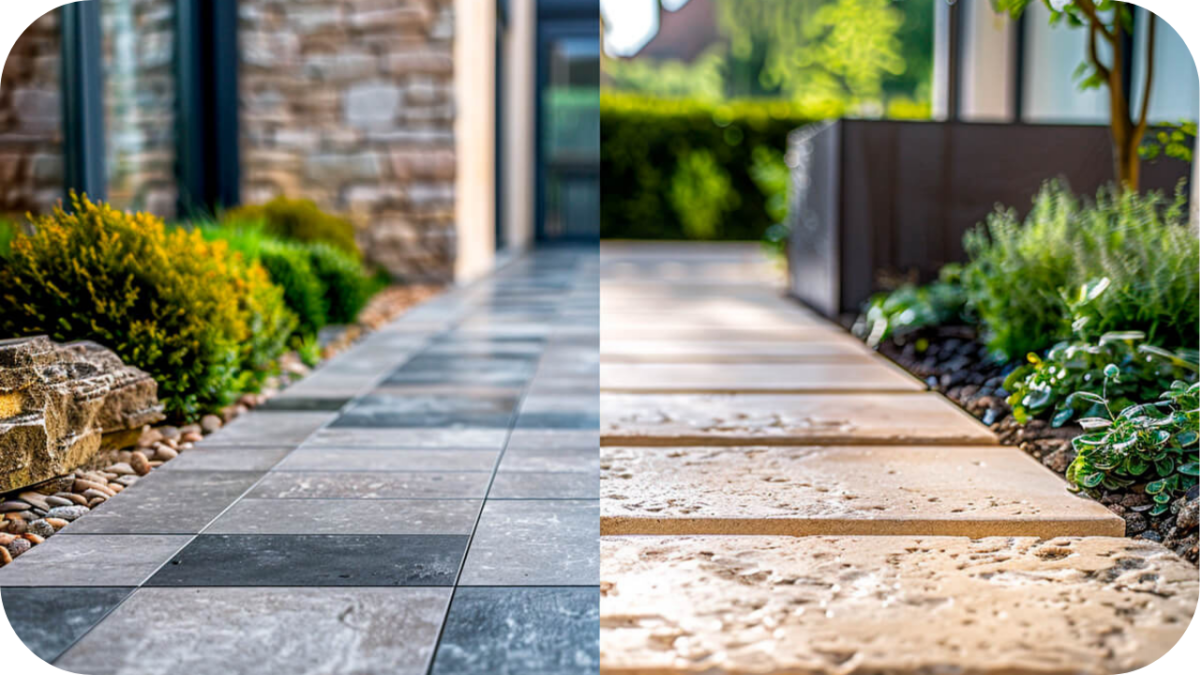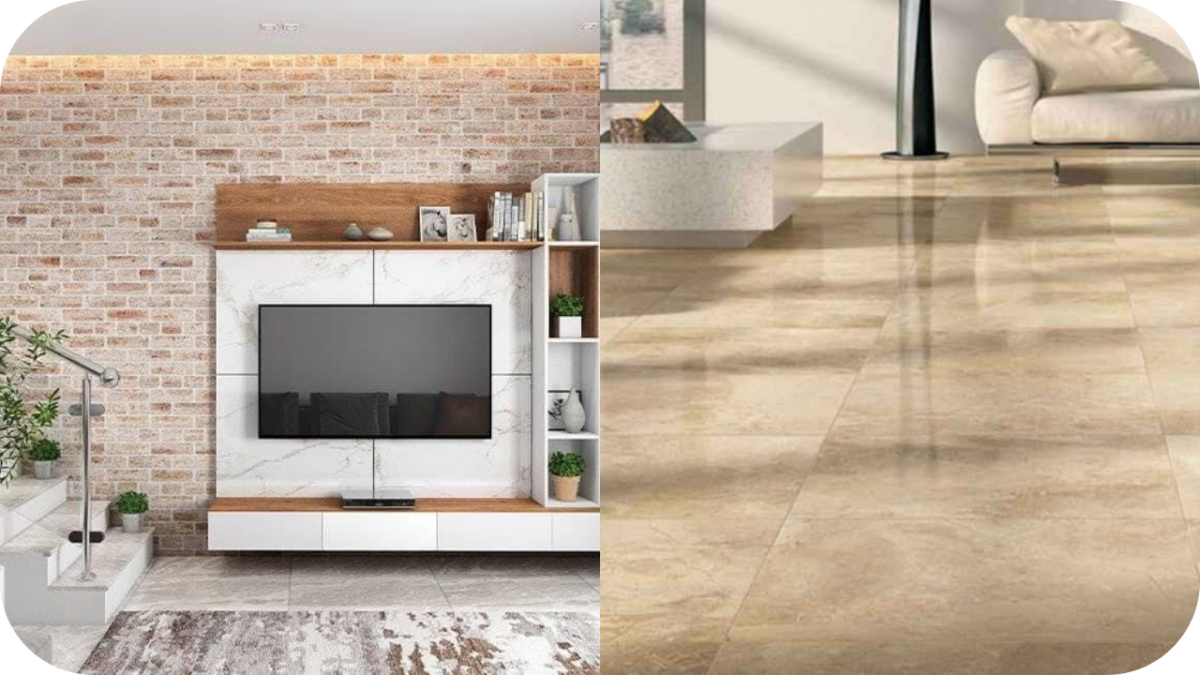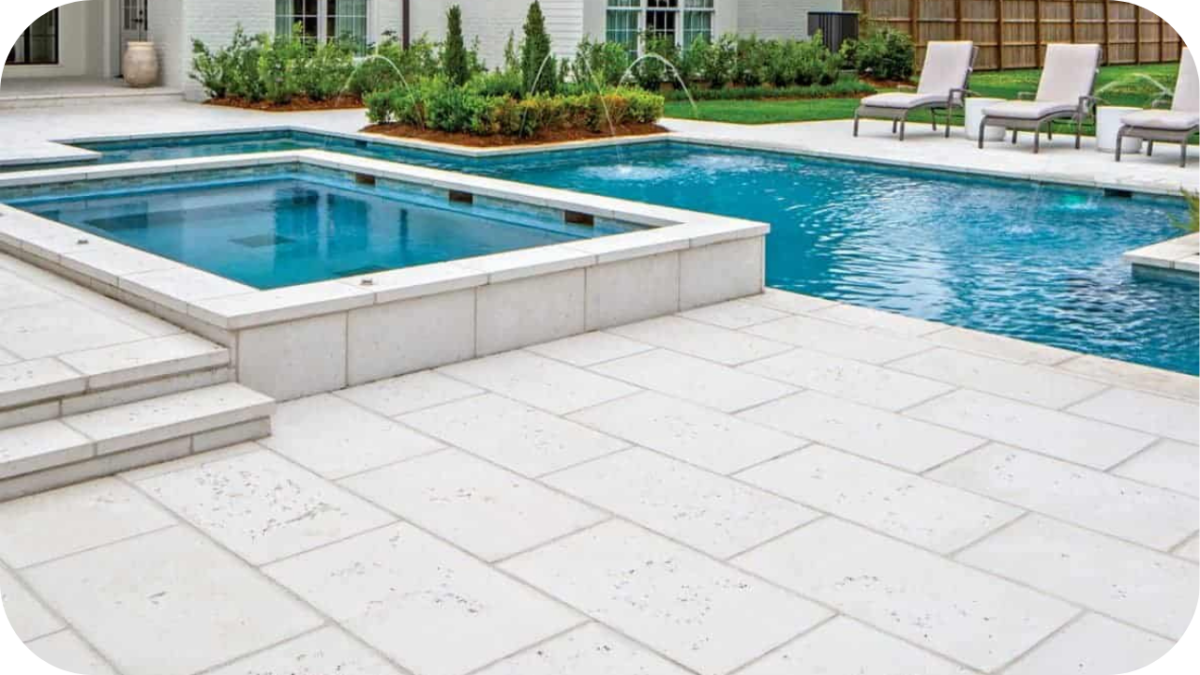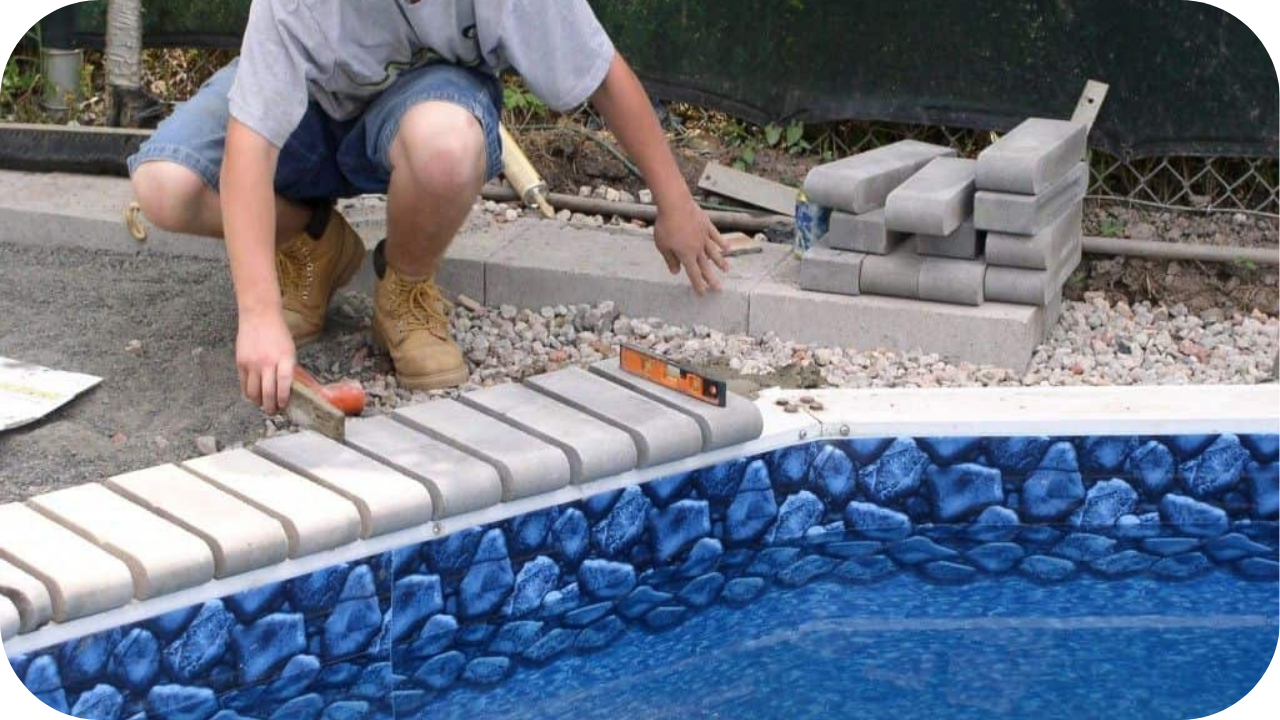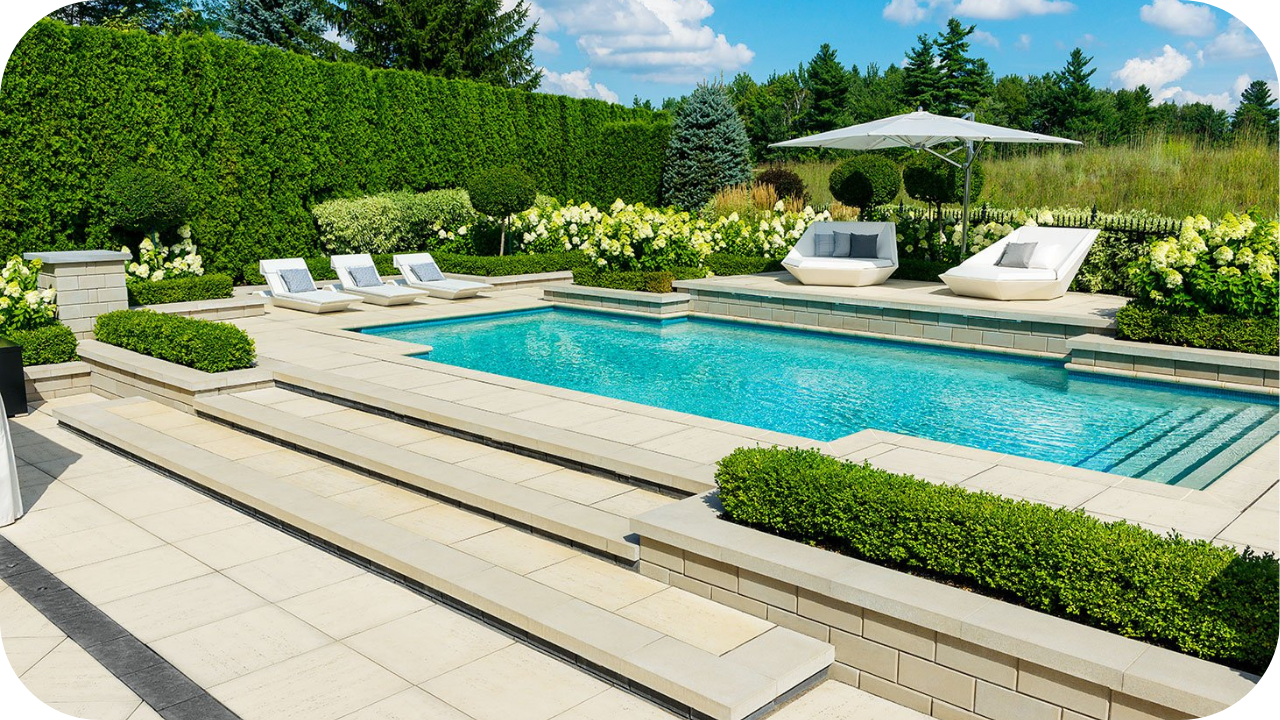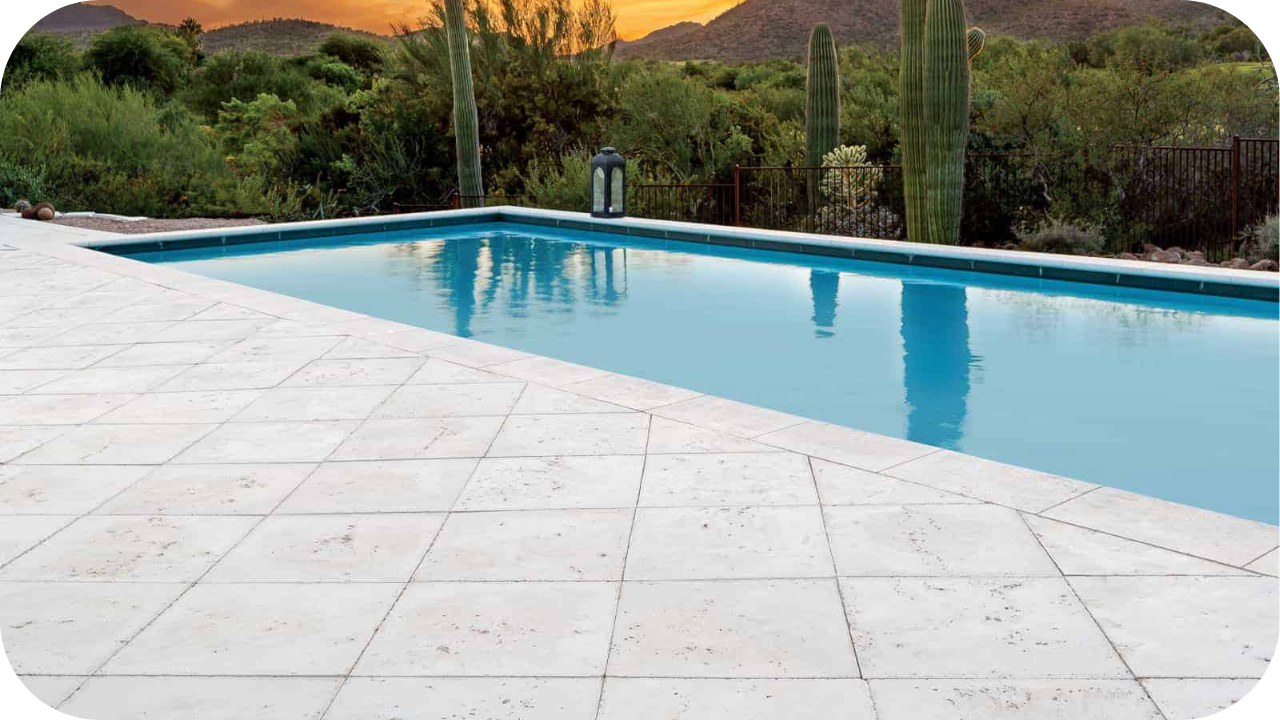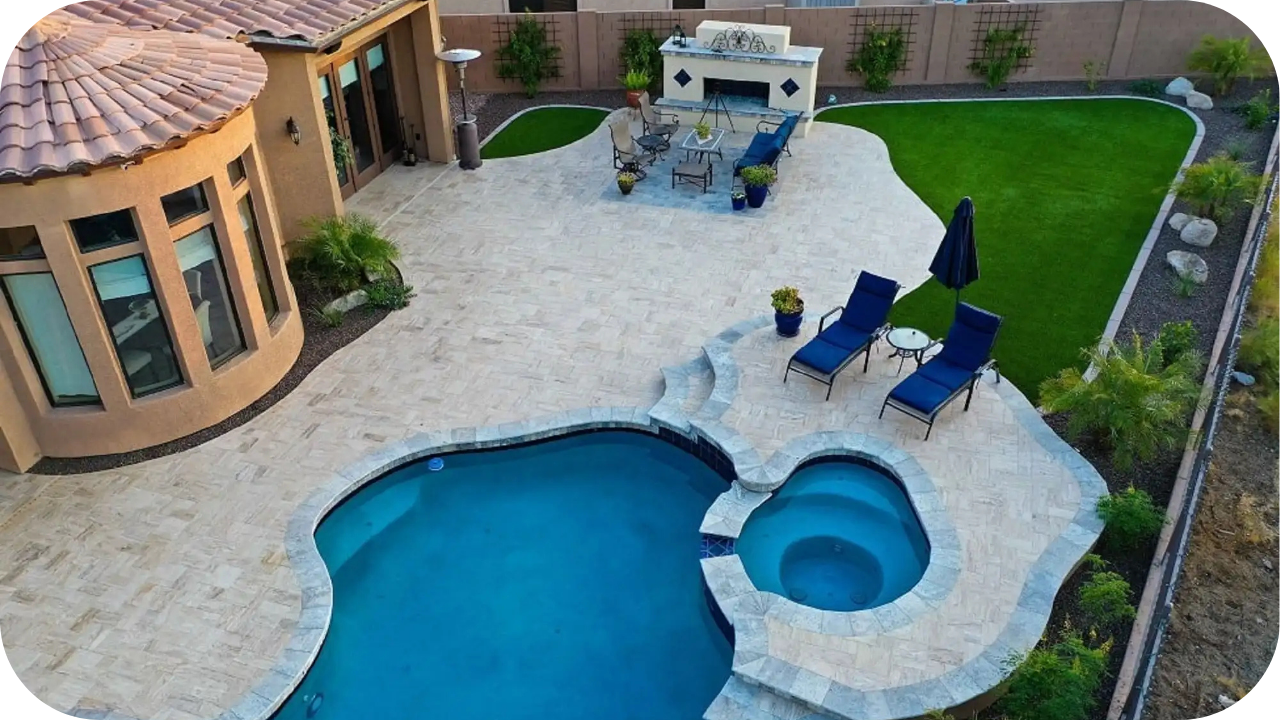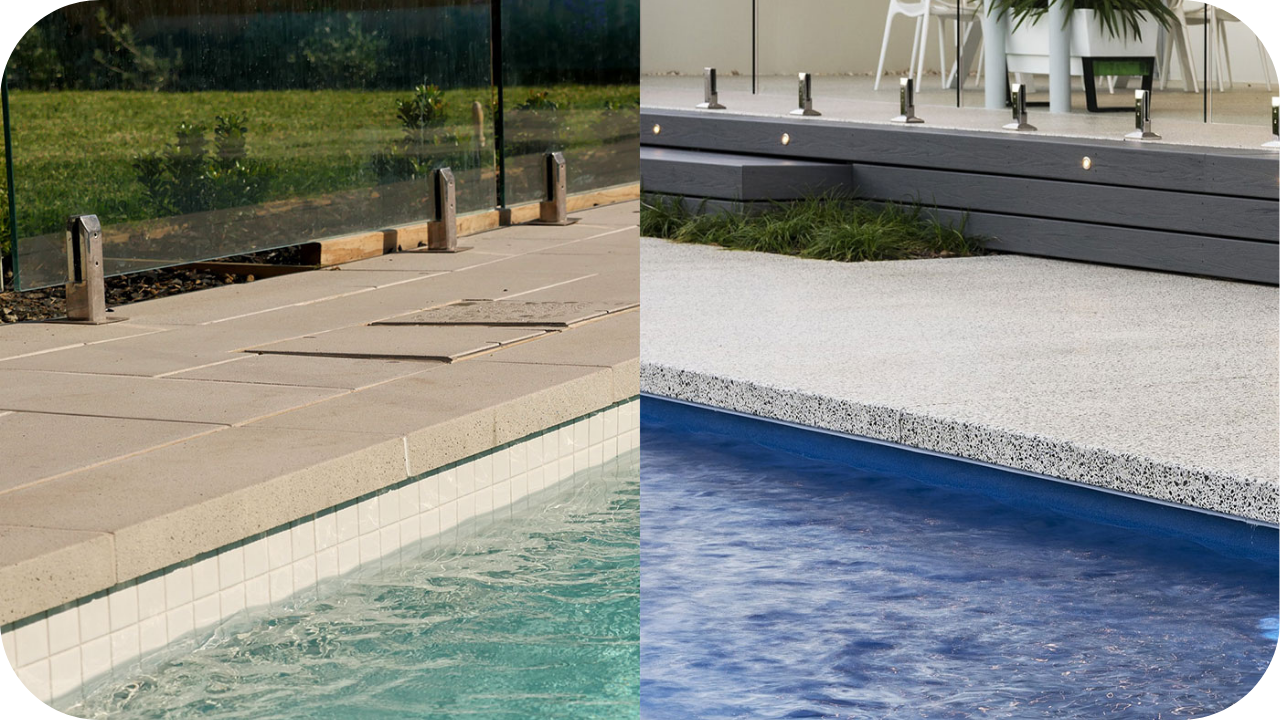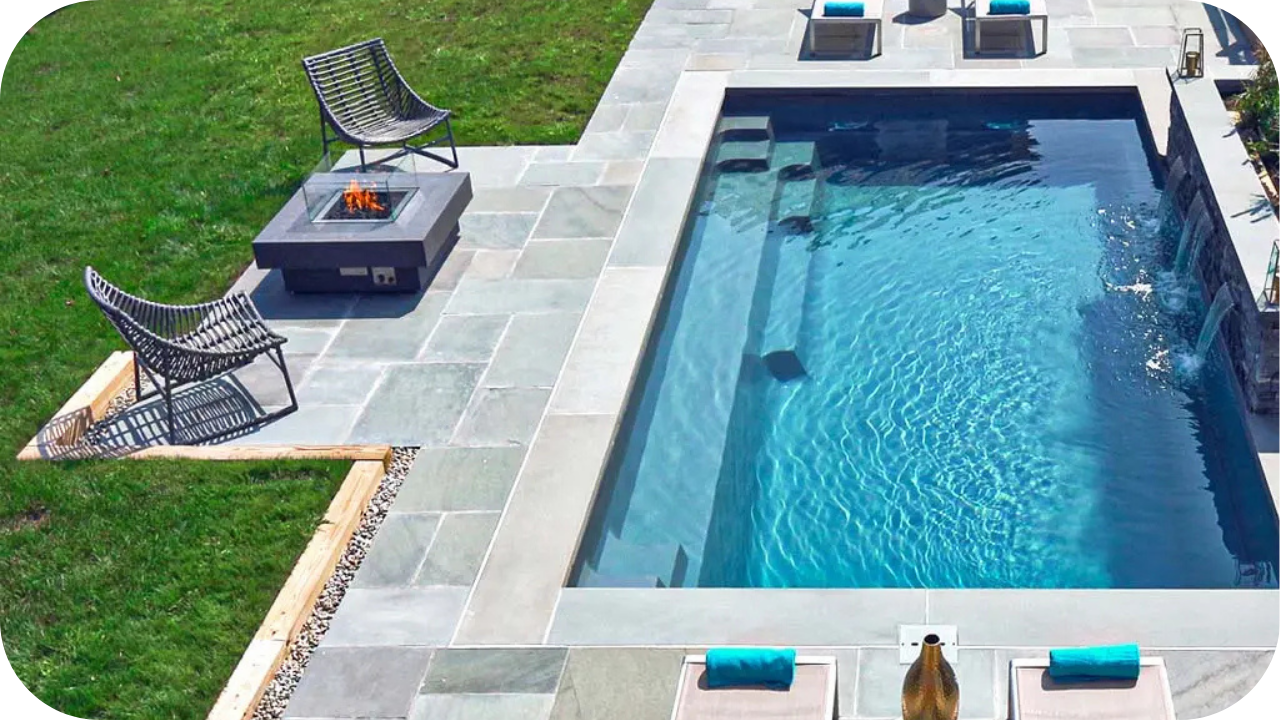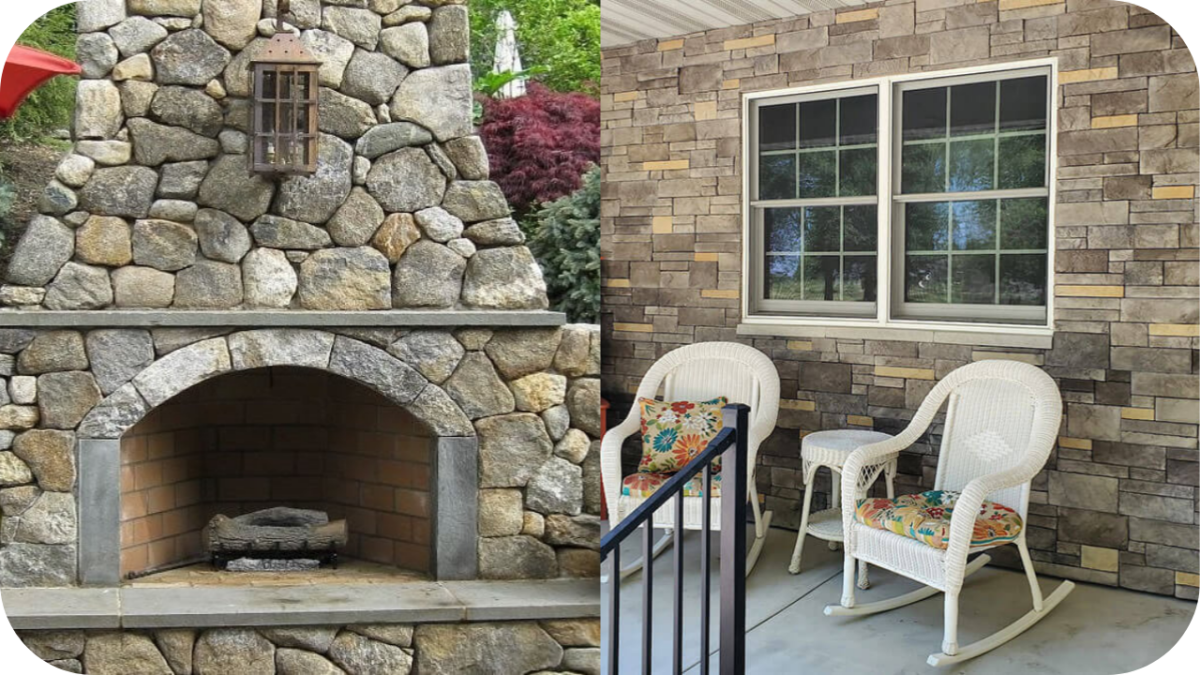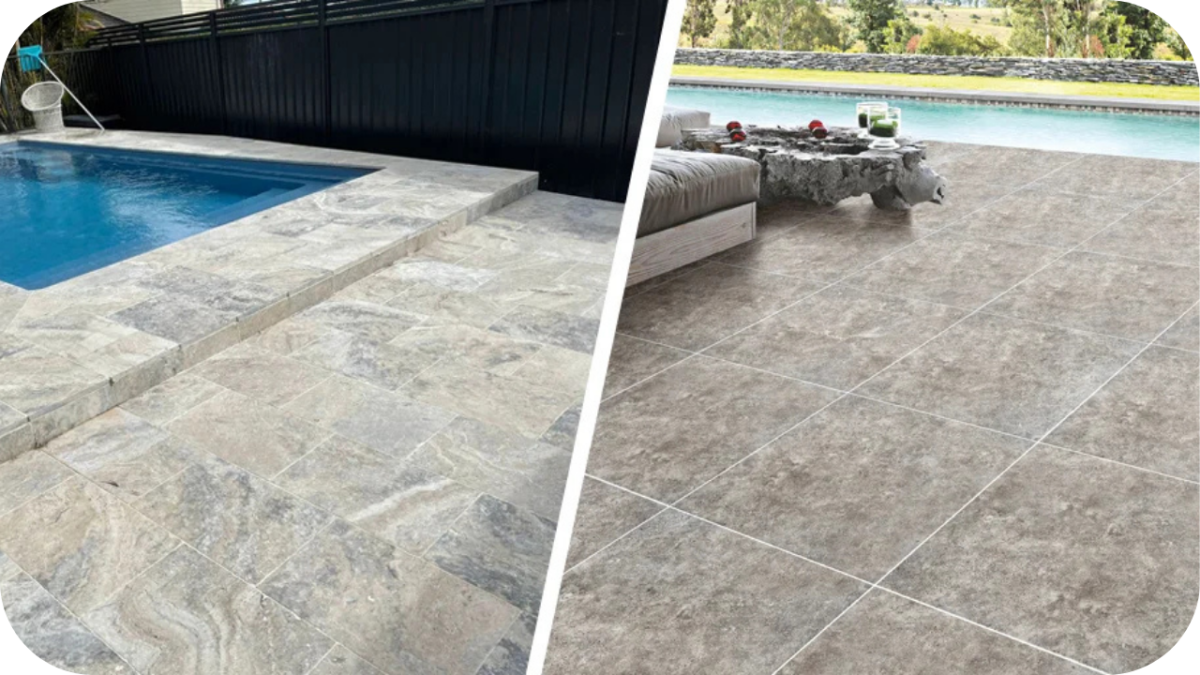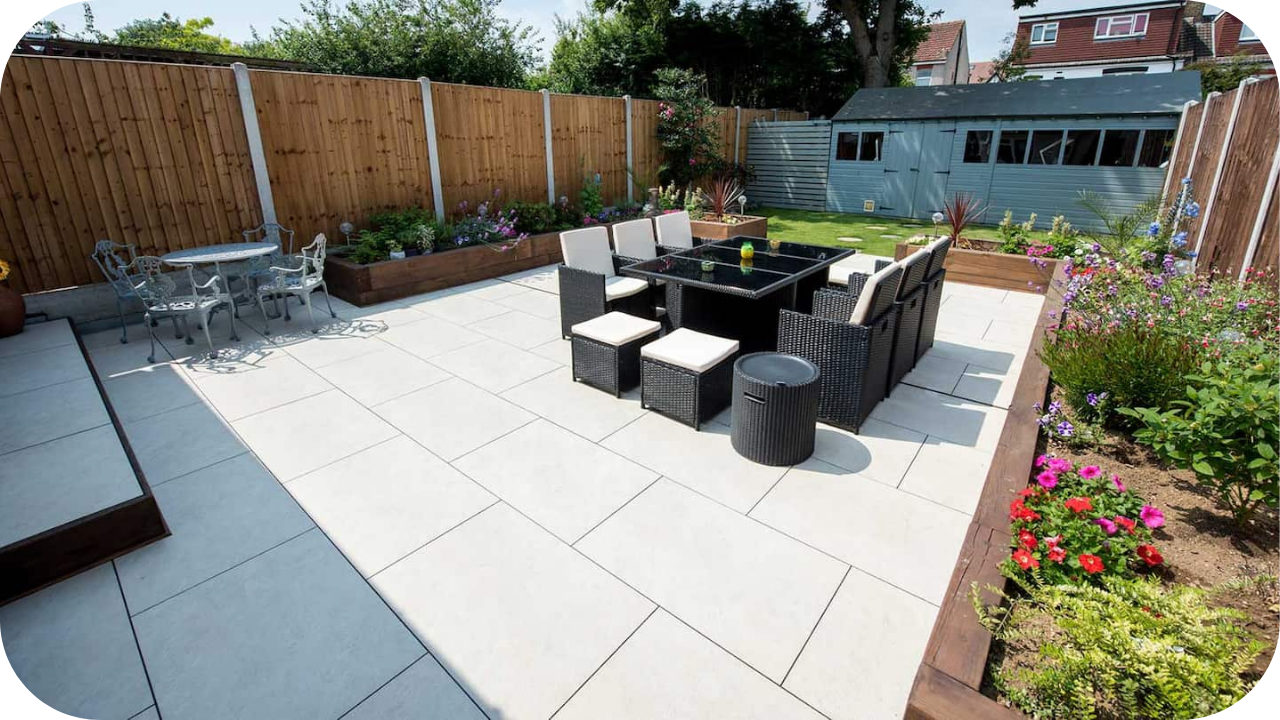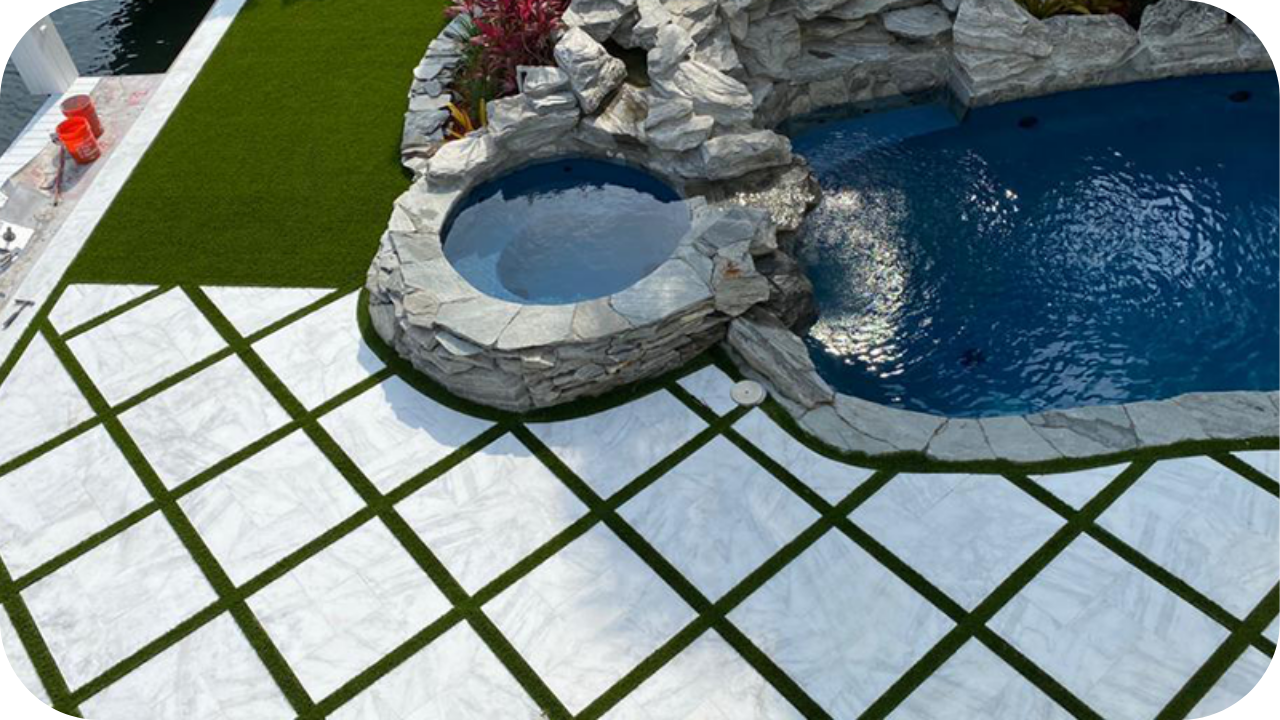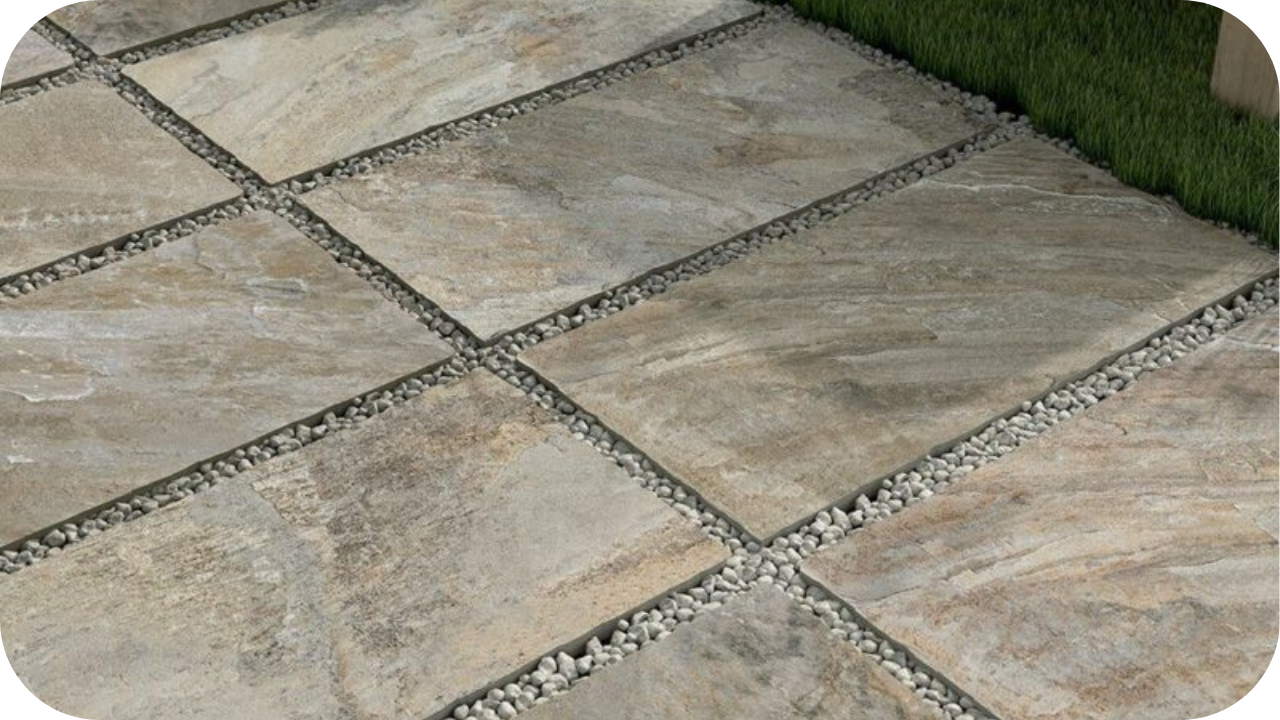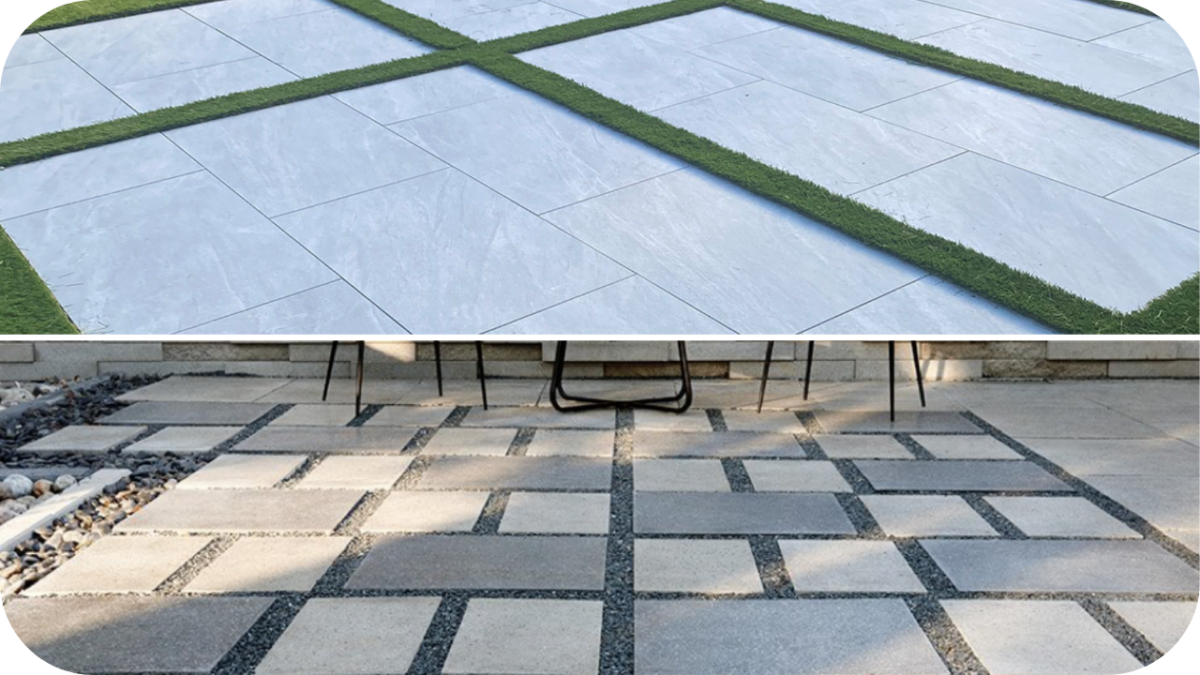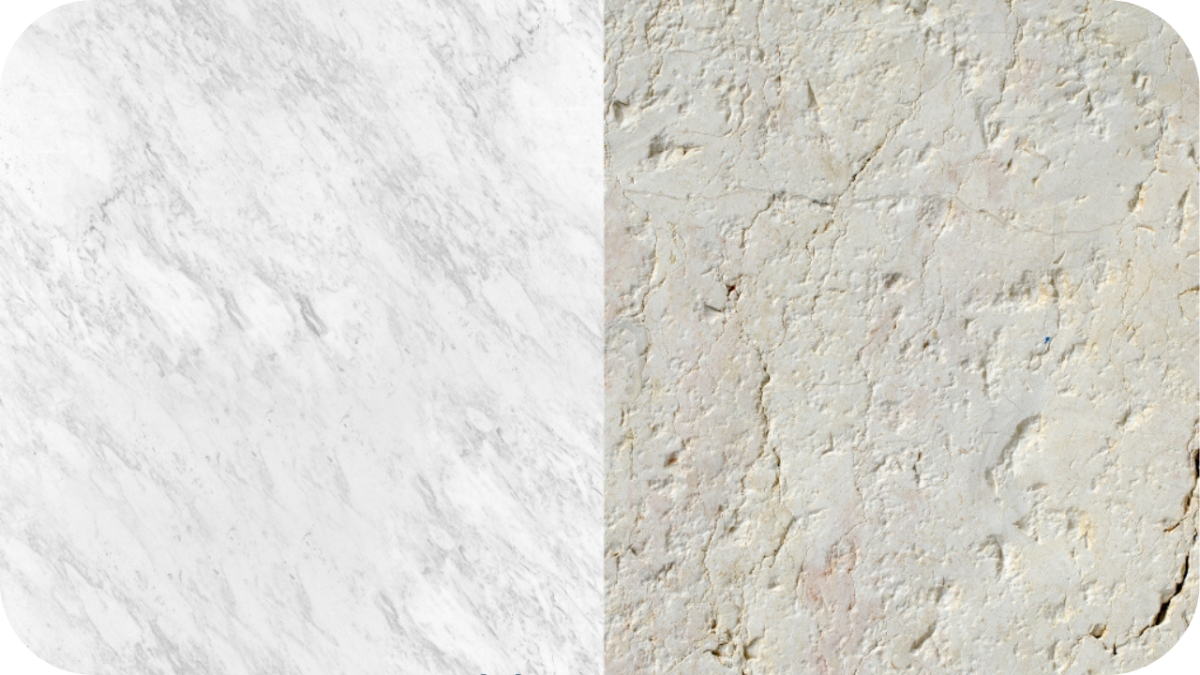Travertine vs Limestone for Garden Paths
Natural stone remains one of the most popular choices in landscaping, offering a perfect blend of beauty, texture, and longevity.
Among the standout options, travertine and limestone continue to lead for garden path design. Each brings its own timeless character to outdoor spaces, but the right choice depends on more than just looks.
Your garden’s style, the local climate, and expected foot traffic all play a role. In this article, we’ll compare travertine and limestone to help you choose the ideal stone for your outdoor walkway.
What Is Travertine?
Travertine is a natural stone that forms around mineral springs, particularly hot springs, making it a type of limestone with a distinct appearance and texture.
It is easily recognised by its porous surface, filled with natural holes and troughs that give it a rugged, organic charm. Travertine is available in earthy tones such as ivory, beige, walnut, and gold, making it ideal for garden paths, patios, and pool surrounds.
Its slip-resistant texture and warm colouring suit informal, Mediterranean, or rustic outdoor spaces. When sealed properly, travertine is both durable and low-maintenance in a variety of climates.
What Is Limestone?
Limestone is a sedimentary rock formed over millions of years from compacted marine fossils and minerals. Known for its smooth texture and uniform appearance, it comes in subtle, elegant shades such as light grey, cream, beige, and soft brown.
Limestone is a versatile choice for both contemporary and heritage-style landscapes, offering a refined look that complements formal garden paths, courtyards, and feature areas.
Less porous than travertine, it generally requires less sealing but may weather more noticeably over time in harsh climates. Its clean lines and softer finish make it ideal for structured outdoor spaces and modern garden design.
Travertine vs Limestone: Key Differences for Garden Paths
They may both be beautiful natural stones, but travertine and limestone offer very different experiences when it comes to outdoor paving. Here is how they truly compare, side by side.
1. Visual Appeal and Texture
Travertine has a naturally porous, textured surface with warm, earthy tones like ivory, beige, and walnut. It lends a rustic, organic charm to garden paths, blending seamlessly with greenery and stone borders.
Limestone, with its smoother texture and uniform finish, appears more refined. Available in shades like soft grey and cream, it suits formal gardens and contemporary landscapes that favour clean lines and subtle sophistication.
2. Durability and Weather Resistance
Travertine is known for its resilience and performs exceptionally well in fluctuating climates, particularly in areas that experience freeze-thaw cycles or heavy rain.
Limestone is also durable but can weather over time, especially in coastal or high-moisture environments. It’s better suited to mild, dry climates where its surface won’t degrade as quickly with exposure to the elements.
3. Slip Resistance and Surface Safety
Travertine’s textured surface provides excellent slip resistance, making it ideal for garden paths near pools or areas that frequently get wet.
Limestone, being smoother, can become slippery when wet unless treated with a textured finish or sealed with non-slip coatings. It requires extra care in moisture-prone areas to maintain safety underfoot.
4. Maintenance and Longevity
Travertine requires minimal upkeep when sealed properly. Its resistance to algae, stains, and erosion makes it a low-maintenance choice that retains its appearance over time with very little effort.
Limestone may need more frequent cleaning, especially in damp or shaded areas where moss or discolouration can occur. With routine care and sealing, it can still offer long-lasting beauty and performance.
5. Cost and Installation Considerations
Travertine is typically more expensive due to its distinctive appearance and density. It’s heavier and may require a reinforced base for proper installation, increasing labour and material costs.
Limestone is generally more affordable and easier to cut and lay, making it a popular option for larger projects or when working with a tighter budget. It’s also less labour-intensive to install.
6. Colour Variation and Design Flexibility
Travertine features more dramatic colour variation within each piece, adding depth and a natural, aged look to outdoor spaces. This makes it ideal for informal garden paths with a rustic or Mediterranean style.
Limestone has a more consistent colour tone, offering a calm, clean look that suits structured or minimalistic gardens. Its subtle shades allow for cohesive designs in both contemporary and heritage-inspired outdoor settings.
Pros and Cons of Travertine vs Limestone for Garden Paths
Travertine and limestone each bring distinct advantages and design considerations. This table outlines the key pros and cons to help you select the best stone for your outdoor path.
| Feature | Travertine | Limestone |
| Pros | – Highly durable and performs well in varying climates | – Smooth, refined appearance that suits both modern and traditional gardens |
| – Naturally slip-resistant surface ideal for wet or poolside areas | – Durable for most outdoor settings with proper sealing | |
| – Wide range of earthy colours and surface textures | – Less porous than travertine, requiring less frequent sealing | |
| – Low maintenance when sealed, resistant to algae and staining | – Generally easier to cut and install, saving on labour costs | |
| – Adds rustic charm and blends beautifully into natural landscapes | – Offers a uniform look that works well in minimalist and formal gardens | |
| – Retains surface grip and appearance even with heavy foot traffic | – Often locally available, reducing environmental impact and shipping costs | |
| – Adds warmth and character to informal or Mediterranean-style gardens | – Naturally cooler underfoot in hot climates, making it comfortable for barefoot use | |
| Cons | – Porous surface requires sealing to prevent water damage and staining | – Prone to staining from organic matter and acidic substances if unsealed |
| – Higher material cost and installation complexity due to density and weight | – Can become slippery when wet if not treated with a non-slip finish | |
| – May be affected by harsh weather conditions if not maintained properly | – Weathers and erodes faster in damp or frost-prone environments |
How to Choose Between Travertine and Limestone for Your Garden Path
Before selecting your stone, consider how your path will be used, the look you’re after, and how much upkeep you’re willing to take on:
- Assess how much foot traffic your path will receive: Choose travertine for busy paths where durability and traction are essential. Opt for limestone in decorative walkways with lighter use.
- Consider your local climate conditions: Select travertine if you live in areas with frost, rain, or temperature extremes. Choose limestone in drier, more temperate environments to reduce weathering over time.
- Think about your preferred garden style: Travertine suits rustic, Mediterranean, and natural landscapes. Limestone works beautifully in modern, minimalist, or traditional garden designs with formal elements.
- Evaluate your maintenance expectations: Go for travertine if you want minimal upkeep with proper sealing. Pick limestone if you’re comfortable with more regular cleaning and occasional surface treatments.
- Match the stone to your surrounding materials: Coordinate travertine with timber, stone, or greenery for a blended, organic look. Pair limestone with crisp lines, neutral colours, and modern landscaping features.
- Weigh your project budget and installation needs: Choose limestone if you need a cost-effective, easy-to-install option. Select travertine for a higher-end finish that’s worth the investment long-term.
- Factor in sunlight exposure and surface temperature: Travertine stays cool underfoot, making it ideal for sunny areas. Limestone may retain more heat and is better suited for shaded paths.
Final Thoughts: Travertine or Limestone—Which Is Right for Your Garden Path?
Travertine is ideal for high-traffic, rustic, or weather-exposed garden paths, while limestone suits formal, low-traffic spaces in milder climates. The best choice depends on your garden’s style, usage, and environment.
For tailored guidance and access to Australia’s finest selection of natural stone, speak with the experts at Splendour in Stone. We’ll help you choose the perfect travertine or limestone pavers to enhance your outdoor space with lasting beauty and performance.

